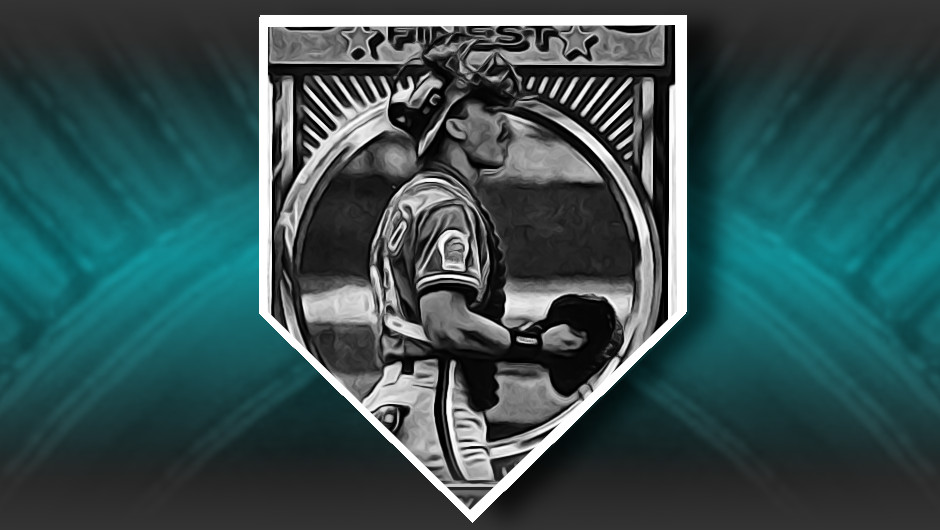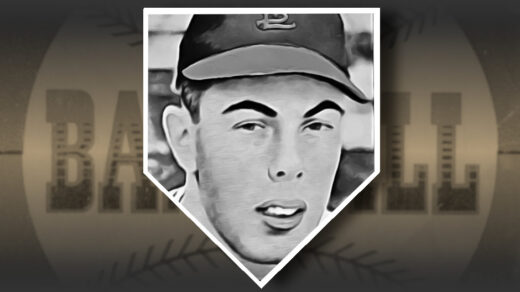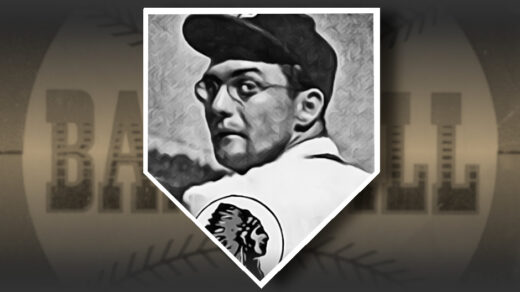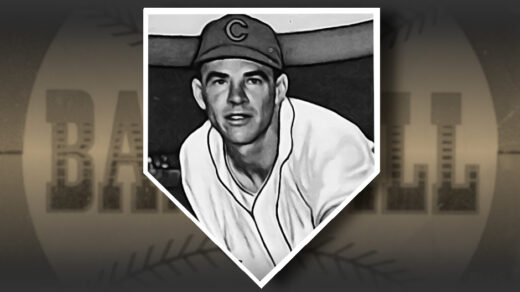That’s an anagram of today’s subject, John Wetteland. He was a member of a half dozen teams in the 1990s, but only took the field for four of them.
Here’s how this went down. He was drafted by the New York Mets out of high school in 1984 but did not sign. The Dodgers selected him in the 2nd round of the follow-up winter draft in 1985 with Wetteland signing 4 months later. Still in the minor leagues two years later, Wetteland was unexpectedly nabbed by the Detroit Tigers in the 1987 Rule 5 Draft. Because Rule 5 selections must be part of the selecting team’s 40-man roster the next season, teams have an incentive to make sure they fit well into plans for the upcoming campaign. The Tigers ended up cutting Wetteland from their roster at the end of Spring Training, returning him to Los Angeles.
Once in LA, Wetteland was plugged into the rotation as a spot starter and middle reliever. Coaches did not have confidence in his ability to throw a sinkerball, a pitch mastered by the rest of the starting rotation and seen as a core competency of any Dodger arm. Wetteland never mastered the pitch, and the Dodgers decided to send him and fellow non-sinkerballer Pedro Martinez to different teams.
Following the 1991 season Wetteland was traded to the Cincinnati Reds in a package deal that brought Eric Davis to Los Angeles. Two weeks later the Reds moved Wetteland in another trade, sending him to the Montreal Expos for top prospect Willie Greene.
The Expos used Wetteland to great effect in their brief run at bringing a championship to Montreal. In 1993 he had an ERA of just 1.37 while striking out almost a dozen batters per inning. The Expos hit their stride in 1994 but the financial effects of the 1994-1995 strike prompted the team to dismantle the roster when play resumed. Wetteland was traded to the New York Yankees for a minor leaguer and cash at the beginning of the new year.
Wetteland immediately took over the Yankees bullpen, saving 30+ games. The next year he surpassed 40 saves while winning the World Series. His contribution to these games? Simply getting saves in each of New York’s 4 victories and earning accolades as World Series MVP. That is an attention grabbing performance and one that can prove highly lucrative when a player is entering free agency. The free-spending Texas Rangers outbid the Yankees for Wetteland’s contract in December, leaving New York to “settle” for Mariano Rivera as the team’s new closer.
Wetteland went on to play four years with Texas, his longest stint with any one team. He racked up saves at an even faster rate, logging 150 in that span before retiring at the end of the 2000 season.
By the end of the 1990s, Wetteland had recorded more saves than any other pitcher of the 1990s. In this period he outsaved his replacement Mariano Rivera by 166 games, career leader Lee Smith by 51, and the role’s defining pitcher Dennis Eckersley by 2.
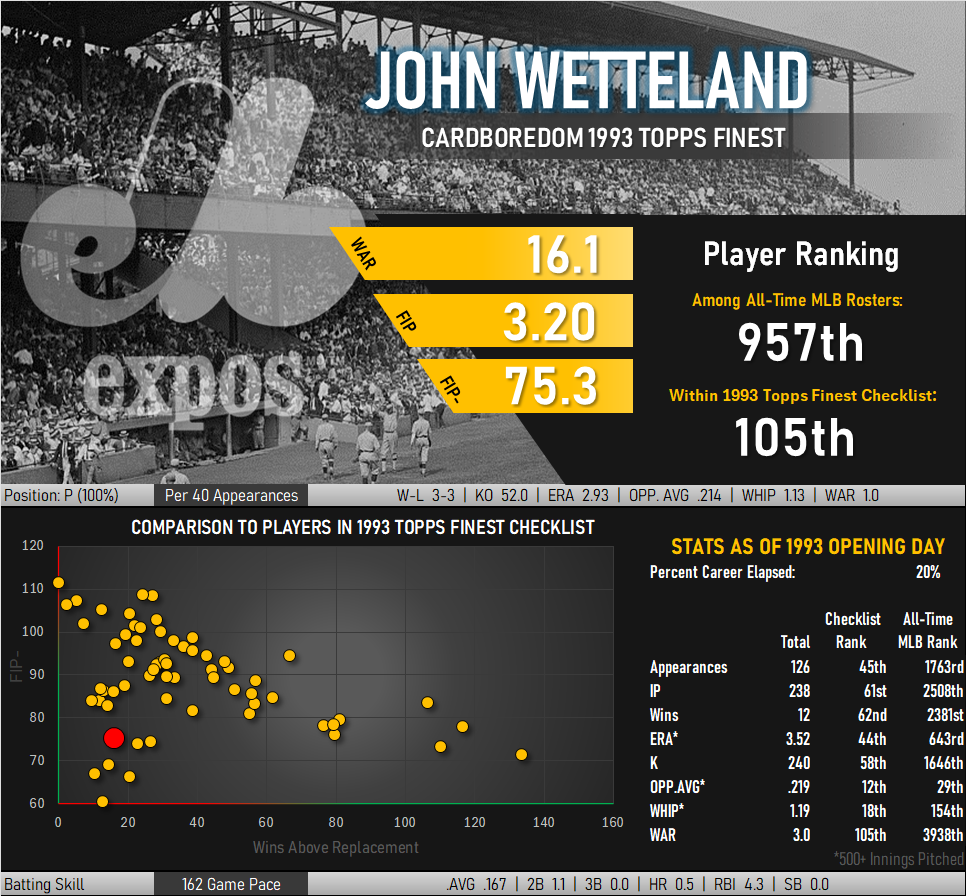
Is He Eating Breakfast in a Baseball Card Photo?
Despite establishing himself as a premier closer and winning the 1996 World Series MVP, Wetteland’s cards never really caught on with collectors. His earliest cards were released in the heart of the junk wax era (rookie card = 1989 Score Traded). Flipping through old price guides, I see that his ’93 refractor was never singled out from the catch-all “minor stars” listings. This despite the fact that Beckett expanded the granularity with which it reported on the set in the late ’90s, topping out with 42% of all cards getting individual reporting of collector demand at the height of his popularity in the January 1998 edition.
Still, it is an interesting card. The piping and embroidery outlining parts of Wetteland’s Montreal uniform show up tremendously well when given the refractor treatment. Collectors are greeted with a Spring Training photo on the back. At first glance he looks like he is in the middle of his windup, cheeks bulging with the inhalation of air that will help put that extra bit of speed on an explosive fastball. However, there is another interpretation of the picture that I can’t shake now that I have seen it. Wetteland does not have cheeks full of air in the game situation delivery depicted on the front. What if he isn’t pitching at all on the back? The nameplate across the bottom of the reverse photo could be obscuring a bench in the bullpen and he could be resting his arm on his knee rather than rearing back in a wind-up. That’s his glove arm visible in the shot and there is no sign that a glove is or isn’t present. Perhaps he’s just taken a big bite of breakfast and is waiting for his turn to throw.




